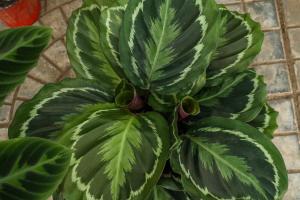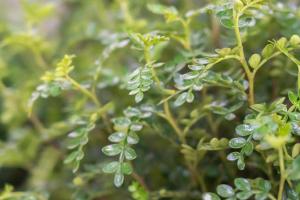How to Add Potassium to Potted Plants
Potted plants are a wonderful way to add greenery to your home, whether you live in an apartment or have a spacious yard. However, many potted plants can become nutrient deficient, which can lead to stunted growth or even death. One nutrient that is essential to the health of potted plants is potassium. In this article, we will explore how to add potassium to potted plants in order to ensure their health and longevity.
Identify the Signs of Potassium Deficiency
Before we can address how to add potassium to potted plants, it is important to identify the signs of potassium deficiency. Some common signs of a potassium deficiency in plants include:
Yellow or brown leaf margins
Stunted growth
Small, weak stems
Leaf curling or brown spots on leaves
If you notice any of these signs in your potted plants, it is likely that they are experiencing a potassium deficiency and need supplemental potassium to thrive.
Add Potassium-Rich Fertilizers
The most common way to add potassium to potted plants is through the use of potassium-rich fertilizers. Look for fertilizers that have a high potassium content; these will typically be labeled with an "NPK" ratio of 0-0-60 or something similar, with the "K" representing potassium. Follow the instructions on the package carefully to avoid over-fertilizing your plants, which can be just as harmful as under-fertilizing.
Use Potassium-Rich Amendments
In addition to using fertilizers, you can add potassium to your potted plants by using amendments that are rich in potassium. These might include greensand, langbeinite, or even crushed eggshells. Again, be sure to follow the instructions on the amendment package carefully to ensure that you do not harm your plants.
Water with Potassium-Rich Solutions
Another way to add potassium to potted plants is to water them with a potassium-rich solution. You can make this solution by dissolving potash (potassium carbonate) in water, or by using seaweed extracts, which are naturally high in potassium. Be sure to dilute the solution properly according to the package instructions, and do not use it more frequently than recommended, as this can lead to over-fertilization.
Conclusion
Adding potassium to potted plants is essential for their health and well-being. By identifying the signs of potassium deficiency, using potassium-rich fertilizers and amendments, and watering with potassium-rich solutions, you can ensure that your potted plants thrive and bring beauty to your home for years to come.

 how many times do yo...
how many times do yo... how many planted tre...
how many planted tre... how many pine trees ...
how many pine trees ... how many pecan trees...
how many pecan trees... how many plants comp...
how many plants comp... how many plants can ...
how many plants can ... how many plants and ...
how many plants and ... how many pepper plan...
how many pepper plan...
































